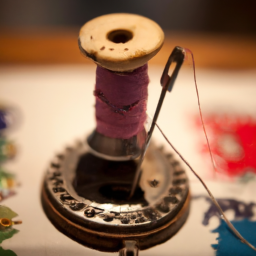
Origin of Sewing Circles

Sewing circles, also known as quilting bees, have a rich history that dates back centuries. These gatherings of individuals, predominantly women, have played a significant role in fostering community, skill-sharing, and mutual support among participants. The tradition of sewing circles has its origins rooted in various historical and cultural contexts.
One of the earliest known instances of sewing circles can be traced back to colonial America, where women from different households would come together to sew garments and quilt blankets for their families. These gatherings not only served a practical purpose but also allowed women to socialize and form bonds with one another, as they often lived in isolated rural communities.
Sewing circles flourished in the late 19th and early 20th centuries during the women’s suffrage movement. Inspired by the cause of women’s rights and societal changes, these circles became spaces where women could discuss political activism while engaging in productive sewing work. By working collectively, women found strength in their numbers and empowered each other to advocate for their rights.
Sewing circles have also been prevalent in many indigenous cultures around the world. Native American tribes, for example, have a long-standing tradition of communal sewing circles. These gatherings not only served to create clothing and blankets but also acted as platforms for passing down tribal knowledge, storytelling, and cultural preservation.
In recent times, sewing circles have experienced a resurgence as a response to the fast-paced, digital world. People are rediscovering the joy of crafting and the value of face-to-face interactions. In sewing circles today, participants share tips, techniques, and patterns, as well as exchanging stories and experiences. These gatherings offer a sense of belonging, fostering connections between people with a common interest in sewing and creativity.
As the world evolves and technology advances, sewing circles continue to evoke a sense of tradition, community, and resilience. They serve as reminders of the importance of preserving craftsmanship, sharing skills, and creating spaces for social connections. Whether it is for practical reasons or as a form of creative expression, sewing circles will likely continue to thrive, evolving with the times while staying true to their historical roots.




